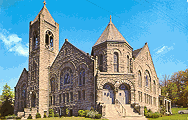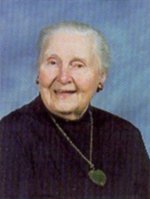|
|
|
||||||||||||||||||||||||||||||
|
Our HistoryThe Winsted United Methodist Church is carrying on the work started by its ancestors in that it believes that.“ We are God’s children and the followers of our Lord and Savior Jesus Christ. We believe our authority is from the Father through His Son, as revealed in the scriptures . As followers of Christ: we gather together in worship, to learn, to grow, and to share. We are empowered by the Holy Spirit and are called to love and to serve.” The members of the Winsted United Methodist Church invite YOU to join us in our fellowship and to find spiritual nourishment with us.
The Methodists were viewed as roving fanatics, and young Jonathan Coe Jr., son of Ensign Jonathan Coe, was converted to Methodism without the approval of his family until, after a preaching service at a home in Winchester, Jonathan's grandfather arose and told his neighbors "This is a man of God." The family members and their friends were converted, and Ensign Jonathan Coe, of considerable influence in the community, opened his home to the itinerant preachers as a "Methodist Tavern." After 15 years, with increasing numbers of converts, meetings were held in the little red schoolhouse of Spencer St., and in 1807 the first church was built (now a dwelling at 30-32 Spencer St.). Local preachers John Sweet and Daniel Coe preached on Sundays when the circuit preacher was at another stations. Pews were auctioned to the highest bidder to gain funds; firewood and candles were used for each and light and a committee of 3, in charge of music, pitched the hymns in absence of any musical instruments. In 1834 a new church was build on part of the present lot for $4500; a preacher, Rev, Daniel Smith, was assigned, and a parsonage *the red brick house 2 doors down from the present church) was rented. The 'long line of spender' includes many outstanding preachers and layman and though often unaware, we are enriched and supported by their lives. The Winsted Methodist Church (Winsted Methodist Episcopal Church, United Methodist Church) went through the societal and organizational changes of each era with a burning zeal for social reform. We offered a post on the "underground railway" for escaping slaves during the Civil War period, holding prayer meetings for the slaves and organizing the "Freedmen's and Southern Educational Society". Foreign and home missions were a major concern in the 1890's and Temperance lectures, with tracts and politically active committees were a forerunner of Prohibition. World War I involved efforts to aid "the boys in the trenches" and, in the volatile postwar era, concern for woman's suffrage, immigrants needs, foreign missions, especially the Armenians following the Turkish massacre and, at home, the plight of the American Indians. Methodist Campgrounds at Plainville and Pine Grove were summer visitation choices for many churchmen who found renewal in the Bible study and revival meetings. Revival and conversion, Christian education, singing and fellowship have marked Methodism in Winsted from the beginning. The present church structure on was dedicated in 1904 during the pastorate of Rev. Benjamin Kidder. Architect: George W. Kramer (N.Y.) Builder: E. B. Parsons, Stained glass windows by Benjamin Sellers (N.Y.) The original Skinner organ was replaced in 1968 by our present pipe organ which was built by Richard M. Geddas whose mother served as soprano soloist for many years. |


